Firstly, there is a kinematic geocentric model that works equivalently to the heliocentric one, so let’s not dismiss it without consideration.
Secondly, all the stars and so-called planets experience an annual parallax with a maximum shift of about 20 arc seconds, and this shift changes relative to the observer’s latitude.
Now, when they take the ratio of the speed of light to this parallax shift of 20 arc seconds, they calculate a value of around 30 km/s. But as Bennett pointed out, that’s simply a measurement and a ratio — it doesn't rule out the possibility of a 30 km/s aether wind drift affecting the apparent positions of those stars.
This parallax is plotted against the Sun’s ecliptic, which means it's already being interpreted based on the assumption that Earth is tilted relative to the Sun's path. But remember, this "tilt" merely describes the Sun's apparent path over a stationary Earth.
The observed 20 arc-second parallax is actually a cosine effect, aligned with the presumed direction of Earth's motion around the Sun. However, when the data is plotted against Earth's orbital plane, the supposed 30 km/s relationship between the cosine of the angle and the speed of light does not hold up.
When you compare the cosine to Earth's ecliptic (with its 23-degree tilt), you do find a ratio suggesting 30 km/s, but this depends on the assumptions made about the Sun-Earth dynamics.
In the geocentric model, the ecliptic plane naturally aligns with the Sun's apparent motion. The cosine ratio involving the speed of light suggests that the sine component arises from a stationary Earth, relative to the Sun. This provides a mechanism for latitude-dependent variations in the arc — whether elliptical, circular, or linear — while maintaining a consistent 30 km/s value.
Ultimately, the geocentric predictions are mathematically identical to the heliocentric ones, but only the heliocentric model is typically presented in textbooks.
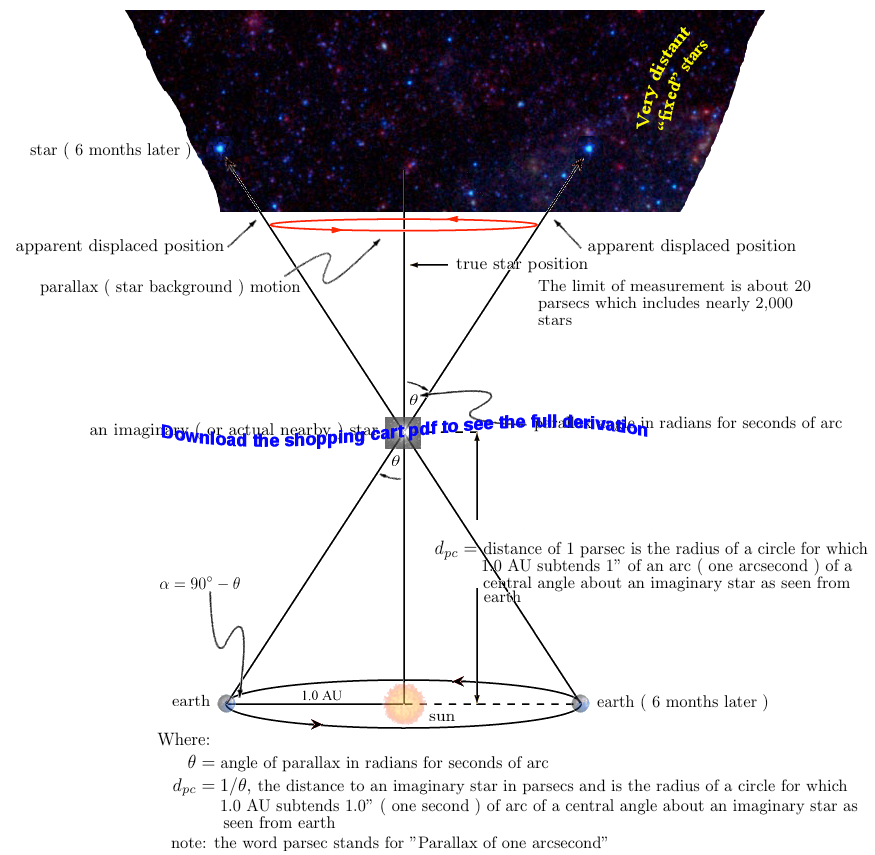
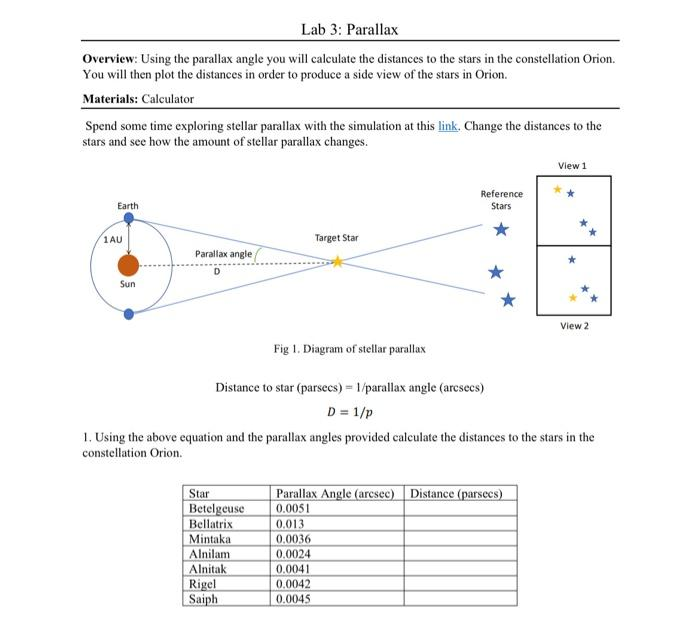

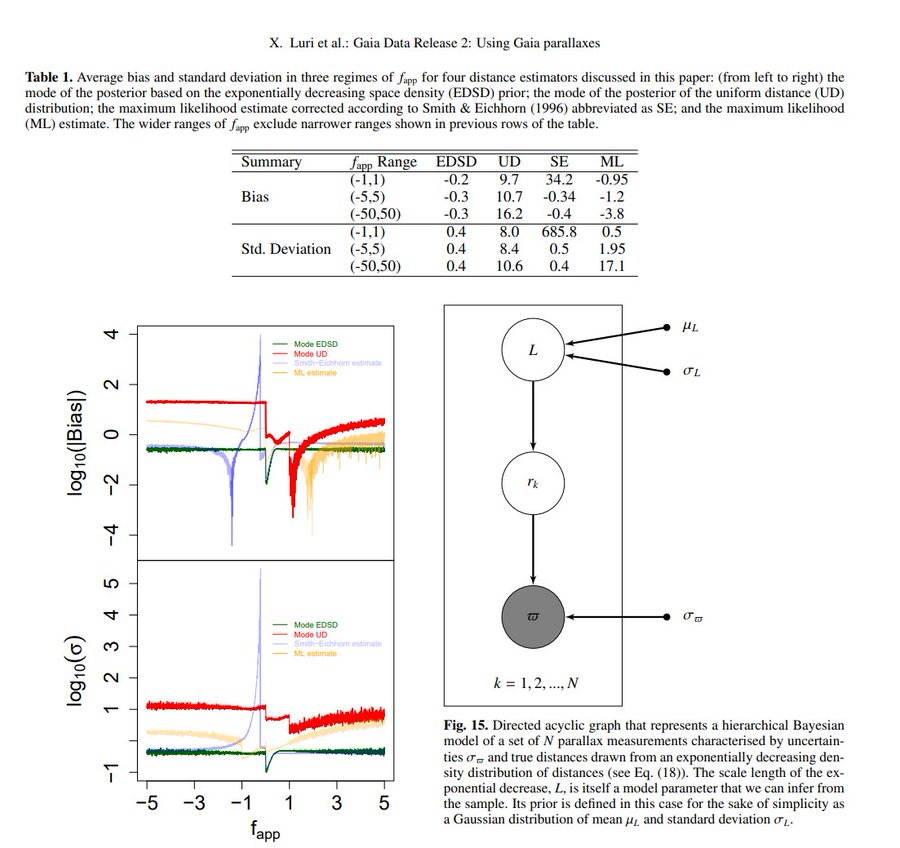
This is what they say the motion would look like exaggerated 10,000 times and for 3.5 years:
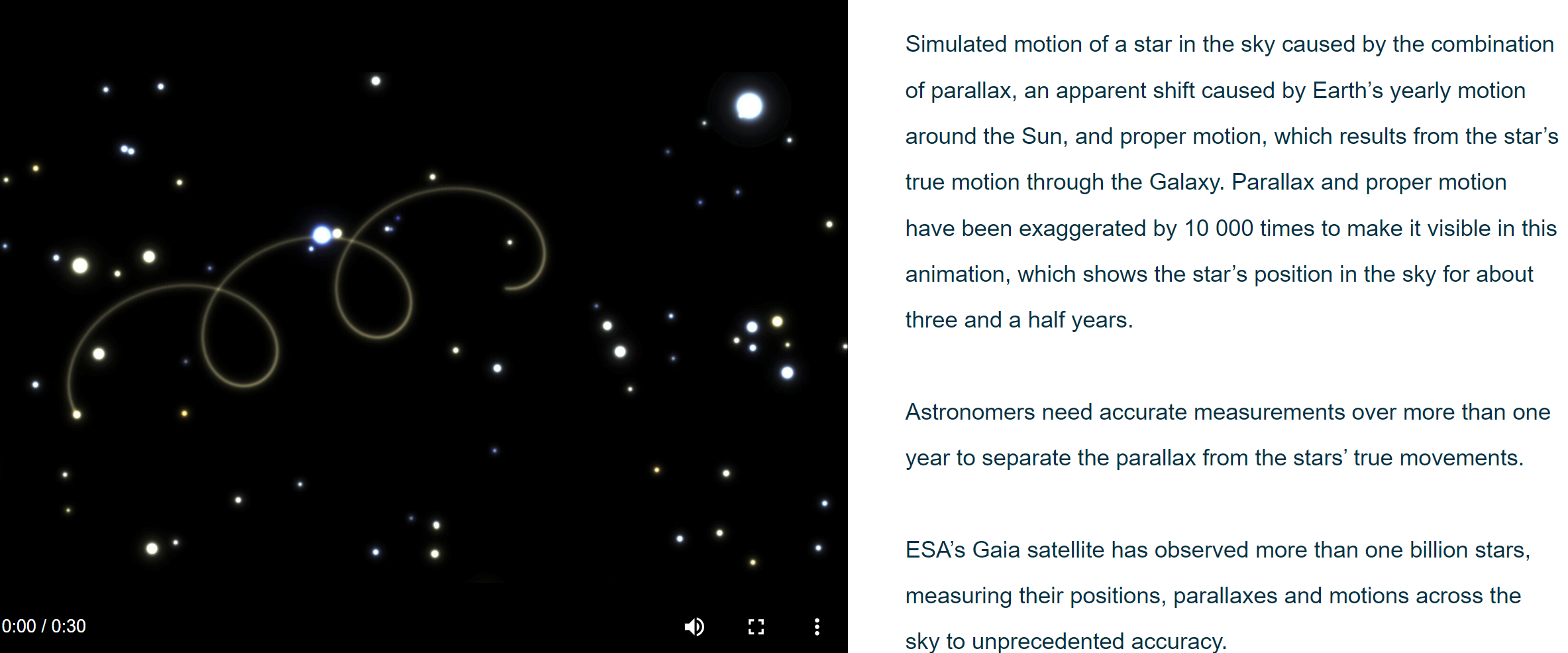

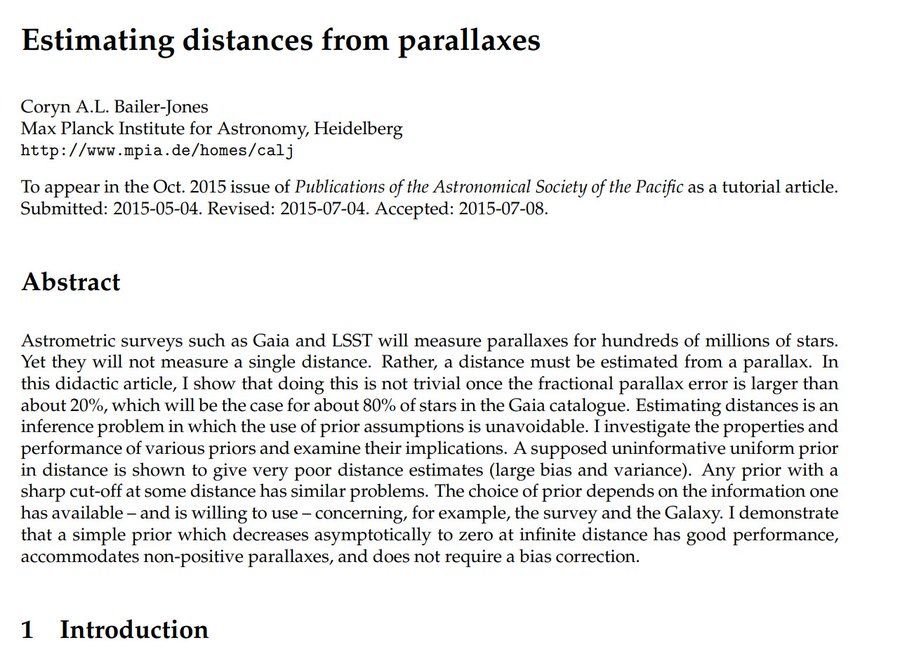
[

oops, more math built on statistical errors then? [Gaia Data Release 2. Using Gaia parallaxes]
[
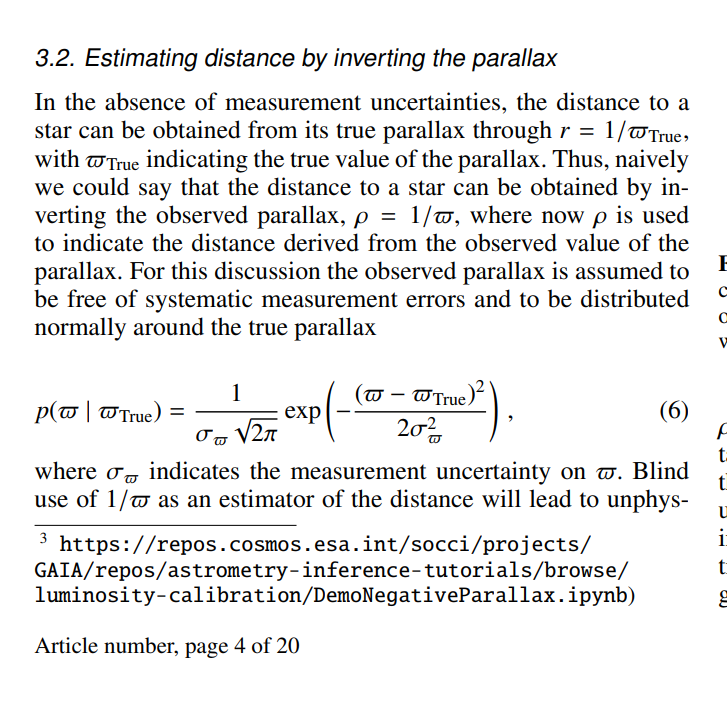
— Negative Stellar Parallax Proof of Geocentrism and a Smaller Universe at [http://forums.catholic.com](https://t.co/pOGyKSp54C) (May 2010)
- All the stars and so-called planets experience an annual parallax with maximum of 20 degrees, the lines change relative to latitude.
- When they ratio the speed of light against the 20 arc seconds, they get 30km/s.
- But as Bennett pointed out, that's a measurement and a ratio. It doesn't mean there's not a 30km/s aether wind drift between what we see and those stars.
- this all plotted against the suns' ecliptic, So it's technically already plotted out against the sun via assuming we're tilted, Even though that just describes the tilt of the sun's path over the earth.
- The observed 20 arc-second parallax is a cosine. Meaning it's in the assumed direction of motion of Earth's revolution. When the data is plotted against Earth's orbital plane, a 30km/s ratio between the cosine and speed of light isn't established.
- When the cosine is ratioed against the Earth's ecliptic (23 degree tilt), the ratio between the angle and c is 30km/s.
- Geocentrically, the ecliptic plane defaults to the sun. The cosine ratio with c implies s that the sine is from a stationary Earth to produce the sine, with respect to the sun. This is the mechanism to produce latitude dependent arc variation (elliptical, circular and linear) and maintain a uniform 30km/s.
- Geocentrix prediction is identical to the heliocentric prediction, but only the heliocentric version is shown in textbooks.





Videos:
# Jeranism - Arcseconds, Triangles, Stellar Parallax
[https://www.youtube.com/watch?v=3eArkUlcnWg&t=2s](https://www.youtube.com/watch?v=3eArkUlcnWg&t=2s)
# Robert Bennett Ph. D. on Stellar Parallax
# Explanations For Stellar Parallax & Stellar Aberration
# GEOCENTRICITY - An animated explanation of "Airy's Failure" experiment.
Space Audits #12: Stellar Parallax Explained
# Geocentric vs Heliocentric Parallax Angle Predictions
[https://www.youtube.com/watch?v=AjGF7K3tEPA&t=159s](https://www.youtube.com/watch?v=AjGF7K3tEPA&t=159s)
[The Path through Relativity](https://publish.obsidian.md/shanesql/Attachments/Database+Tabs+2/The+Path+through+Relativity)
---
Helio-sicophant's counter:
@sagarelyas 1 month ago (edited)
Robert is horribly wrong and misrepresents experiments. He says stellar aberration is due to an ether wind blowing the light. If this was the case, the Michelson-Morley expt. (MMX) should have specifically picked up the 30 km/s relative motion between the earth and the ether, which didn't happen. Remember that the formula for stellar aberration is theta = arctan v/c. From this, the value of "v", i.e., the velocity of the earth (or ether according to Robert) can be found. Since theta = 20.5 arcseconds, v will be = 30 km/s. Why didn't MMX pick up this 30 km/s speed?
Robert further says the MMX results weren't zero, it picked up tiny velocities, although far from the expected 30 km/s. This shows Robert doesn't understand statistical significance and experimental error. Every measurement will have inherent errors. The obtained fringe shift was only 0.01 compared to the expected value of 0.4 - far from confirming the null hypothesis. There is no such thing as a perfect experiment where you'll get exactly zero as the reading when there is no effect.
Negative parallax
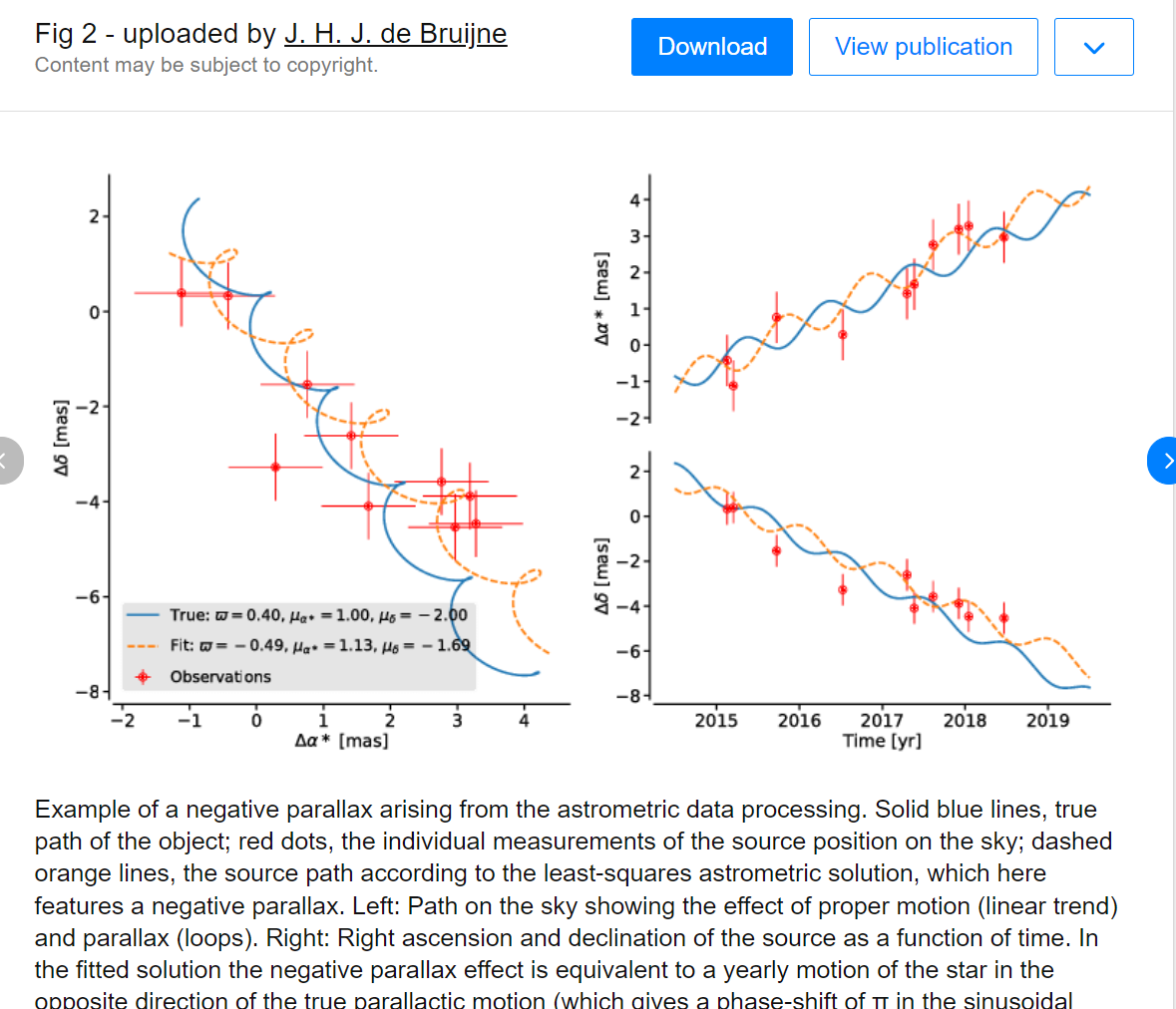
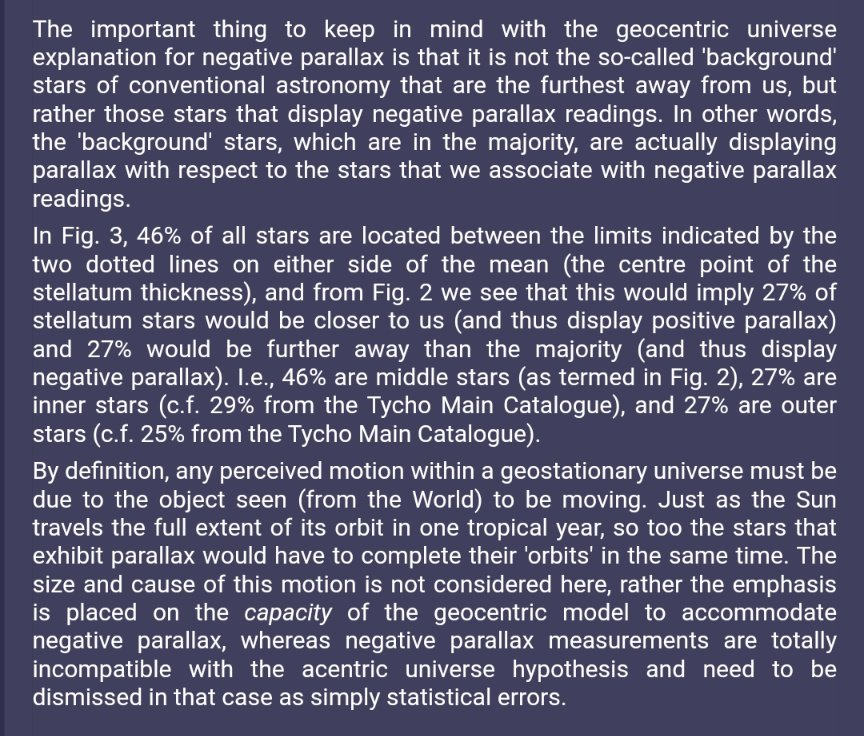
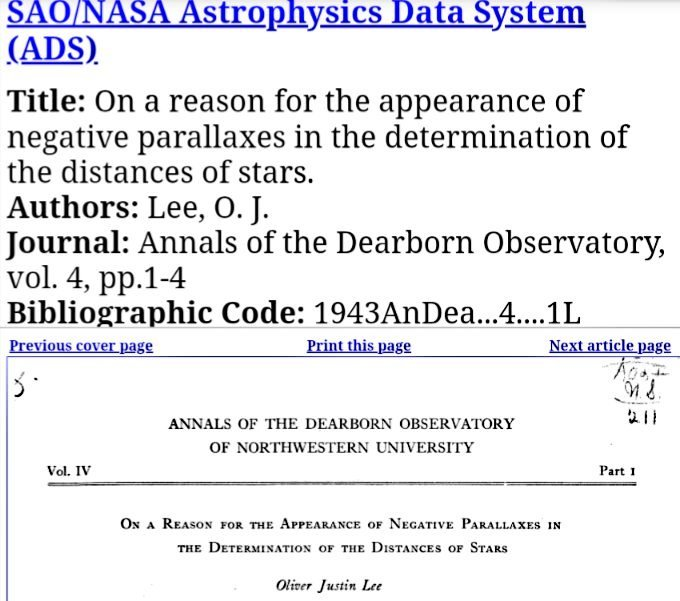

![[Pasted image 20240127001231.png]

[https://www.aanda.org/articles/aa/full_html/2018/08/aa32964-18/aa32964-18.html#R26](https://www.aanda.org/articles/aa/full_html/2018/08/aa32964-18/aa32964-18.html#R26)
[https://www.aanda.org/articles/aa/full_html/2018/08/aa32964-18/aa32964-18.html](https://www.aanda.org/articles/aa/full_html/2018/08/aa32964-18/aa32964-18.html)
[https://ui.adsabs.harvard.edu/abs/1920MeLuS..22....3M/abstract](https://ui.adsabs.harvard.edu/abs/1920MeLuS..22....3M/abstract)
Stellar Aberration
Heliocentric They measure an angle a . And they adjust their telescope tilt 6 months later to get measure the same star. They claim that because they have to adjust the angle, this signifies earths motion and there is no geocentric explanation for this.
### The multi-spacecraft high-energy solar particle event of 28 October 2021
A. Kouloumvakos, A. Papaioannou, C. O. G. Waterfall, S. Dalla, R. Vainio, G. M. Mason, B. Heber, P. Kühl, R. C. Allen, C. M. S. Cohen, G. Ho, A. Anastasiadis, A. P. Rouillard, J. Rodríguez-Pacheco, J. Guo, X. Li, M. Hörlöck and R. F. Wimmer-Schweingruber
A&A, 682 (2024) A106
DOI: [https://doi.org/10.1051/0004-6361/202346045](https://doi.org/10.1051/0004-6361/202346045)
### Combining STEREO heliospheric imagers and Solar Orbiter to investigate the evolution of the 2022 March 10 CME
B. Zhuang, N. Lugaz, N. Al-Haddad, C. Scolini, C. J. Farrugia, F. Regnault, E. E. Davies, W. Yu, R. M. Winslow and A. B. Galvin
A&A, 682 (2024) A107
DOI: [https://doi.org/10.1051/0004-6361/202347561](https://doi.org/10.1051/0004-6361/202347561)
### Synoptic maps from two viewpoints - Preparing for maps from SDO/HMI and SO/PHI data
P. Loeschl, J. Hirzberger, S. K. Solanki, J. Schou and G. Valori
A&A, 682 (2024) A108
DOI: [https://doi.org/10.1051/0004-6361/202346044](https://doi.org/10.1051/0004-6361/202346044)
### A comparison of compact, presumably young with extended, evolved radio active galactic nuclei
Helmut Meusinger and Mukul Mhaskey
A&A, 682 (2024) A18
DOI: [https://doi.org/10.1051/0004-6361/202243388](https://doi.org/10.1051/0004-6361/202243388)
### Constraining stellar and orbital co-evolution through ensemble seismology of solar-like oscillators in binary systems - A census of oscillating red giants and dwarf stars in Gaia DR3 binaries
P. G. Beck, D. H. Grossmann, L. Steinwender, L. S. Schimak, N. Muntean, M. Vrard, R. A. Patton, J. Merc, S. Mathur, R. A. Garcia, M. H. Pinsonneault, D. M. Rowan, P. Gaulme, C. Allende Prieto, K. Z. Arellano-Córdova, L. Cao, E. Corsaro, O. Creevey, K. M. Hambleton, A. Hanslmeier, B. Holl, J. Johnson, S. Mathis, D. Godoy-Rivera, S. Símon-Díaz and J. C. Zinn
A&A, 682 (2024) A7
DOI: [https://doi.org/10.1051/0004-6361/202346810](https://doi.org/10.1051/0004-6361/202346810)
## # # A case study of an early galaxy cluster with the Athena X-IFU
Evidence for inflows and outflows in the nearby black hole transient Swift J1727.8−162
D. Mata Sánchez, T. Muñoz-Darias, M. Armas Padilla, J. Casares and M. A. P. Torres
A&A, 682 (2024) L1
DOI: [https://doi.org/10.1051/0004-6361/202348754](https://doi.org/10.1051/0004-6361/202348754)
### Augmenting the power of time-delay cosmography in lens galaxy clusters by probing their member galaxies - II. Cosmic chronometers
P. Bergamini, S. Schuldt, A. Acebron, C. Grillo, U. Meštrić, G. Granata, G. B. Caminha, M. Meneghetti, A. Mercurio, P. Rosati, S. H. Suyu and E. Vanzella
A&A, 682 (2024) L2
DOI: [https://doi.org/10.1051/0004-6361/202348267](https://doi.org/10.1051/0004-6361/202348267)